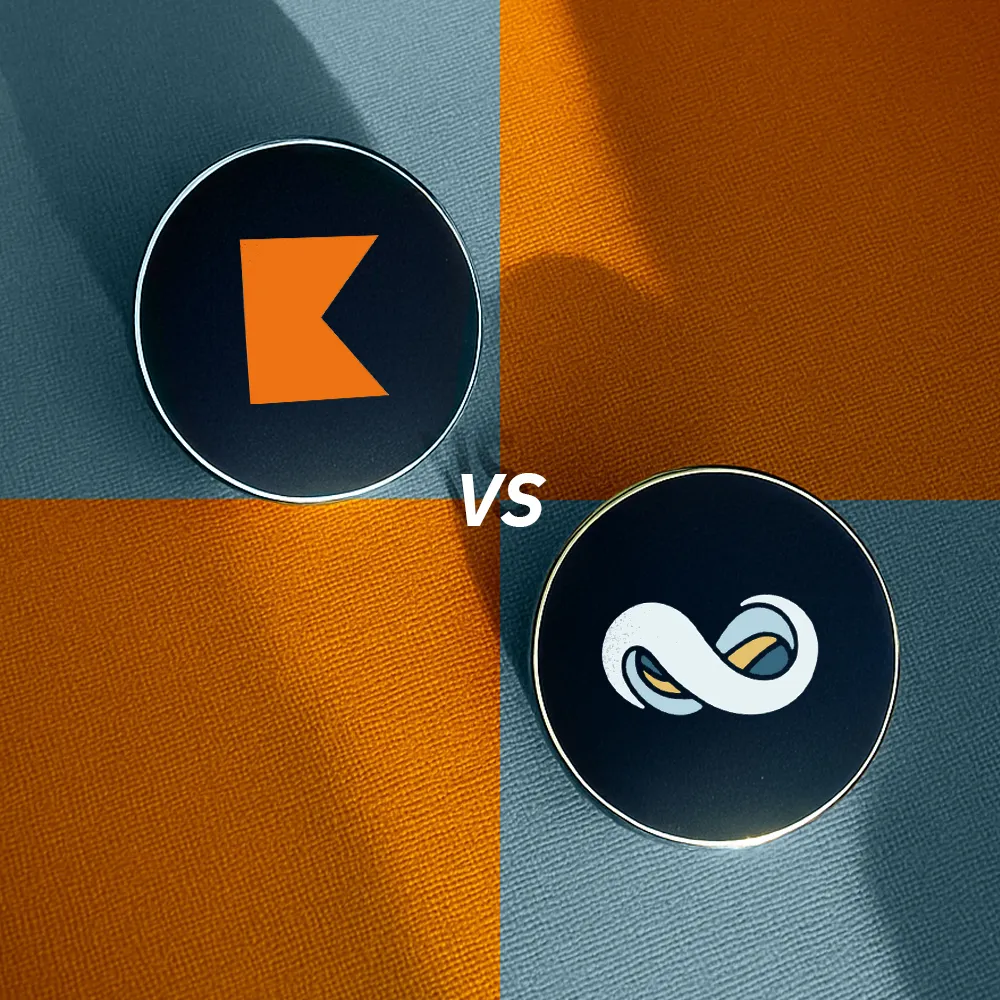Why choosing the right PSA software matters
Choosing the right PSA platform is no longer just a back-office decision.
It’s a strategic move that can shape your company’s trajectory for years to come.
In a world where people, projects, and profits are more tightly intertwined than ever, finding a solution that truly unifies your teams, simplifies operations, and elevates client experience is a competitive advantage.
Enter Oracle NetSuite OpenAir, Kantata OX, and Rocketlane: three leading softwares in the Professional Services Automation space, each offering a unique blend of features addressing project delivery, resource planning, financial management, collaboration, and business intelligence.
But which one is truly built to empower your organization’s next chapter of growth?
Let’s take a step back and take a look at the challenges and priorities of modern services organizations:
1. AI at the center of delivery operations
Modern teams seek to embed AI across every aspect of their operations, from intelligent resource allocation and proactive risk prediction to automated reporting and process optimization. AI is no longer being seen as a supplementary tool. It is the very engine that can deliver actionable recommendations, streamline routine tasks, and surface deeper insights that were previously buried in spreadsheets. By putting AI at the core, teams not only boost productivity but also move toward a new era of predictive, autonomous services delivery, where decisions are faster, smarter, and more data-driven than ever before.
2. Seamless integration of people, projects, and clients
Today’s services organizations juggle distributed teams, complex project portfolios, and growing client expectations. The old days of siloed spreadsheets and disconnected platforms are long gone. Modern organizations need PSA solutions that unify resource scheduling, project timelines, and client communications in a single, collaborative hub. This ensures that everyone—project managers, consultants, and clients—operate from the same set of data and priorities, reducing misunderstandings and accelerating decision-making. Integration with core systems like ERP, CRM, and time tracking also minimizes manual work and double entry.
3. Visibility and insights across all operations
As businesses grow, the number of moving parts increases exponentially. Leadership teams need instant clarity on project health, resource utilization, financial performance, and pipeline risks. The right PSA platform surfaces real-time KPIs, offers customizable dashboards, and connects every part of the delivery lifecycle, from creating projects using templates to invoice generation and billing. This holistic visibility allows executives to proactively address staffing shortages, revenue leakage, or slipping timelines before they impact outcomes.
4. Enhanced client collaboration and accountability
Collaboration is no longer just internal; clients expect transparent communication, self-service access, and real-time project updates. Modern PSAs facilitate this by offering customer portals, shared workspaces, and in-context chat, all designed to break down barriers and foster shared ownership of project goals. This not only improves client satisfaction, but also helps mitigate project risks by setting clear expectations, capturing feedback early, and maintaining accountability on both sides.
5. Scalable, future-proof workflows that reduce silos and manual work
As digital transformation accelerates, organizations must be ready to adapt to changing business needs, team structures, and emerging technologies. Leading PSA platforms offer configurable workflows, automation, and open integrations to ensure processes scale with the business and not against it. The result: fewer operational bottlenecks, reduced manual data entry, and the flexibility to pivot as new service lines, geographies, or client demands emerge. These future-proof systems facilitate organizational agility, ensuring teams remain competitive and resilient amid market shifts.
Whether you’re optimizing for increased margins, scaling operations, or accelerating time-to-value, the PSA you pick must support your unique workflows, teams, and goals.
That’s why we have put together this detailed comparison guide. We take a close look at NetSuite OpenAir, Kantata OX, and Rocketlane’s core features and modules that matter most to services teams, including resource management, project delivery, collaboration, reporting, integrations, and pricing.
Our goal is to equip you with actionable insights to choose the solution that’s the best fit for your organization’s size, industry, technology stack, and operational goals.
Whether you're a leader in IT consulting, a global marketing agency, or a rapidly-growing SaaS implementation team, this guide breaks down:
- Product overviews and unique strengths
- Who each tool is best suited for
- The business impact of each solution
- Key differences in usability, client engagement, and platform vision
Let’s dive in and discover which PSA platform is best positioned to power high-performing services organizations of tomorrow.
About Kantata OX and NetSuite OpenAir: Company Overview
Both Kantata OX and Oracle NetSuite OpenAir have established themselves as recognizable names in the PSA software space, but they come with their own unique backgrounds and limitations that are important for any services organization to weigh.
Kantata OX: A resource-centric PSA with growing complexity
Kantata OX was formed by the merger of Mavenlink and Kimble in 2022, with headquarters in Irvine, CA and London, UK. The company employs around 800 people and claims a customer base of organizations across technology, consulting, marketing, and engineering sectors. Kantata OX positions itself as a “resource-first” PSA tool, emphasizing capacity planning and resource optimization with the support of AI-driven insights.
Kantata OX’s key capabilities include:
- AI-driven resource recommendations (with additional cost for Workato-based workflows)
- Project accounting and margin visibility built into project views
- 50+ integrations, including Salesforce, Jira, and NetSuite
However, teams evaluating Kantata should be aware of:
- High implementation effort (12–20 weeks on average)
- Costly add-ons (e.g., AI insights, CSAT scoring, automation packages)
- Limited native automation and collaboration tools
- Basic AI and underwhelming project management
Please note: Kantata’s so-called “AI” features are only available in higher tiers or as extras, offer limited true intelligence, and lag behind modern standards. Its project management tools feel rigid and outdated, often forcing teams to rely on spreadsheets or supplemental PM platforms for flexible execution.
Kantata OX’s innovation cycle has been relatively slow in recent years with limited product releases. The product’s evolution has also introduced a degree of complexity. The UI has improved in recent years, but many users still find the system configuration-heavy and less intuitive than modern PSA solutions.
While it does offer integrations with popular business tools like Salesforce, Jira, and Slack, it lacks a native ERP backbone and requires additional modules or external tools for advanced automations and workflows, often at an extra cost. Larger organizations may find the setup and configuration of Kantata OX more complex and may need to invest further for true flexibility.
Notably, Kantata OX lacks a dedicated customer portal, a gap that can create friction in client-facing delivery.
For organizations that prioritize capacity planning and multi-project environments, Kantata OX might check the right boxes, but it will come with tradeoffs in agility and innovation cadence.
NetSuite OpenAir: A legacy PSA platform tied to NetSuite ERP
NetSuite OpenAir, part of Oracle’s broader product suite since its acquisition in 2008, markets itself as a PSA solution for “end-to-end” project management and resource allocation. Its primary advantage is its native integration with NetSuite ERP, which means financial data and project data can flow between systems without manual reconciliation. It serves organizations with complex billing models and deep financial reporting needs, offering strong capabilities in revenue recognition, multi-currency support, and GL integration. This is a clear benefit for organizations already invested in the Oracle/NetSuite ecosystem.
OpenAir’s key features include:
- Native NetSuite ERP integration
- Configurable billing and revenue rules (ASC606-compliant)
- AI-based resourcing (introduced recently)
However, its UI and flexibility haven’t kept pace with newer tools. The platform’s structure can be rigid for dynamic, sprint-based projects, and users frequently report a steep learning curve and limited collaboration functionality. Its pricing model can become expensive for companies with large numbers of infrequent users.
NetSuite OpenAir’s standalone capabilities, outside of the NetSuite ecosystem, may require custom connectors or additional third-party tools, and customer feedback cites that major efficiency gains often come only after significant configuration and process changes.
NetSuite OpenAir is particularly well-suited to financial controllers and operations teams that need ERP-level governance. But for services teams looking for ease of use, real-time collaboration, and fast project turnaround, OpenAir may feel more like infrastructure than innovative PSA.
G2 comparison ratings: Kantata vs. NetSuite OpenAir
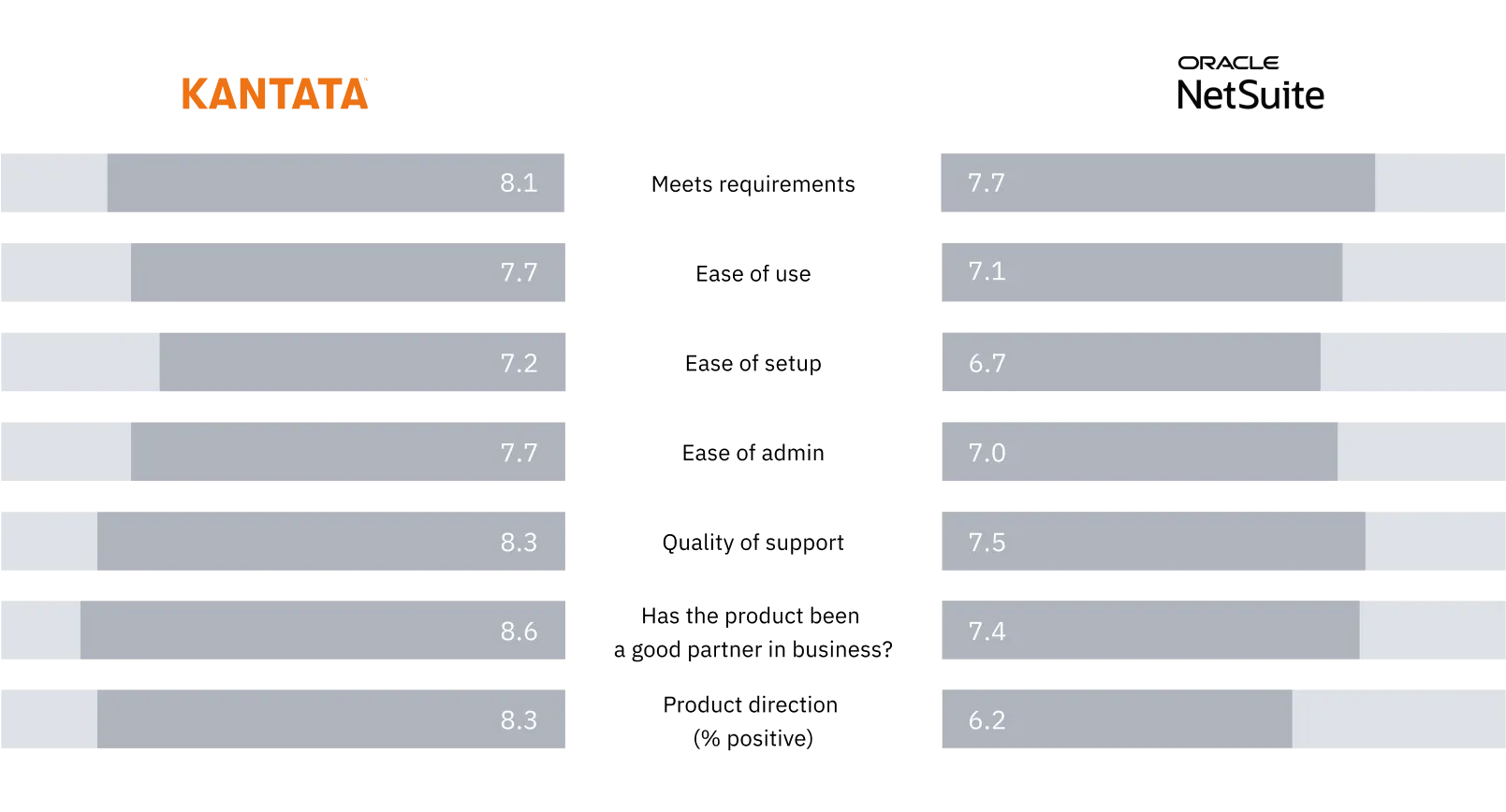
Please note: This comparison chart focuses on Kantata’s overall PSA offering and not exclusively on Kantata OX.
Product overview of Kantata OX and NetSuite OpenAir
Below is a side-by-side, feature overview of Kantata OX and NetSuite OpenAir, capturing their core platform strengths, key modules, and points about their usability and configuration.
.webp)
Kantata OX is geared toward organizations that prioritize resource optimization and analytics, but is priced higher and poses a more complex onboarding for teams.
OpenAir stands out for firms already invested in NetSuite’s financial suite and offers geo-compliance but may lag in ease of use and collaboration features.
Kantata OX vs. NetSuite OpenAir: Detailed feature comparison
.webp)
Pros and Cons of using Kantata OX vs. NetSuite OpenAir
Kantata OX
Pros:
- Strong resource management capabilities: Kantata OX offers a resource-first approach with AI-driven insights for optimized utilization and capacity planning.
- Strong business intelligence: The platform provides robust reporting and analytics tools for data-driven decision-making.
- Salesforce integration: Deep integration with Salesforce enhances CRM connectivity and project pipeline management.
- Mobile accessibility: A well-established mobile app allows for on-the-go project and resource management.
- Comprehensive time and expense tracking: Kantata OX includes strong features for tracking time and expenses across projects.
Cons:
- Steep learning curve: The platform’s complex interface can be challenging for new users to navigate.
- Time-consuming setup: Configuration and implementation processes are often lengthy and require significant effort.
- Rigid project management: Some project management features lack flexibility, leading teams to rely on external tools like spreadsheets.
- Higher cost: Kantata OX has a higher price point compared to some competitors, which may be a barrier for smaller organizations.
- Performance issues: Users report occasional slowdowns when handling large datasets.
- Technical expertise needed for customization: Customizing the platform often requires advanced technical skills.
- Complex reporting: Configuring reports can be difficult, often necessitating a dedicated technical resource.
NetSuite OpenAir
Pros:
- Deep ERP integration: OpenAir’s seamless connection with NetSuite ERP provides real-time financial visibility and eliminates dual data entry.
- Global support: The platform supports multi-subsidiary, multi-currency, and multi-tax requirements, making it ideal for international operations.
- Flexible billing options: NetSuite OpenAir handles complex billing models (e.g., time and materials, fixed fee) within a single project.
- Scenario-based resourcing: "What-if" modeling helps optimize resource allocation and hiring decisions.
- Scalability: OpenAir is designed to handle large user bases and complex, multi-project environments.
Cons:
- Limited customer collaboration: The platform lacks strong client portals and collaboration tools, which can hinder client engagement.
- Outdated UI/UX: Some users find the interface less intuitive and modern compared to newer PSA tools.
- Integration dependencies: OpenAir’s full potential is best realized when used with NetSuite, which may not suit organizations using other ERP systems.
- Complex implementation: Setting up NetSuite OpenAir can be time-consuming and may require significant customization.
- Resource management limitations: While functional, resource management features may not be as advanced as those in more specialized tools.
Final takeaway
While Kantata OX and NetSuite OpenAir offer robust PSA feature sets, both platforms present substantial hurdles for today’s fast-moving, client-facing service organizations.
- Kantata OX can be powerful for resource-centric firms but comes wrapped in complexity, costly add-ons, and lacks true workflow and client automation.
- NetSuite OpenAir excels when deeply linked with NetSuite, but falls short on collaboration, ease of use, and affordable scalability for diverse teams.
Modern, next-gen alternatives like Rocketlane address these gaps by providing better customer collaboration, streamlined workflow automation, real-time insights, and a lower overall cost of ownership—making it a compelling choice for professional services teams ready to move beyond yesterday’s limitations.
Why Rocketlane is the best PSA software for professional services teams
For service delivery teams aiming to streamline project delivery, enhance client satisfaction, and maximize operational efficiency, Rocketlane emerges as the best Professional Services Automation (PSA) software. Its innovative combination of AI-powered modules, automations, client-centric collaboration tools, and a focus on radical efficiency sets it apart from competitors.
Here’s a breakdown of why Rocketlane is the ultimate best choice for service delivery teams:
1. Unmatched Client Collaboration
Rocketlane redefines how services delivery teams engage with clients, offering tools designed to foster transparency and trust:
- Advanced Customer Portals: Clients gain real-time visibility into project milestones, progress, and deliverables, ensuring they’re always informed.
- Seamless Communication: Integrated chat, document sharing, and feedback loops keep clients connected, reducing miscommunication and delays.
- Unified Platform: By bridging internal operations and client interactions, Rocketlane eliminates the fragmentation often seen in other PSA tools.
This client-first approach ensures that service delivery teams can prioritize relationships and deliver exceptional experiences effortlessly.
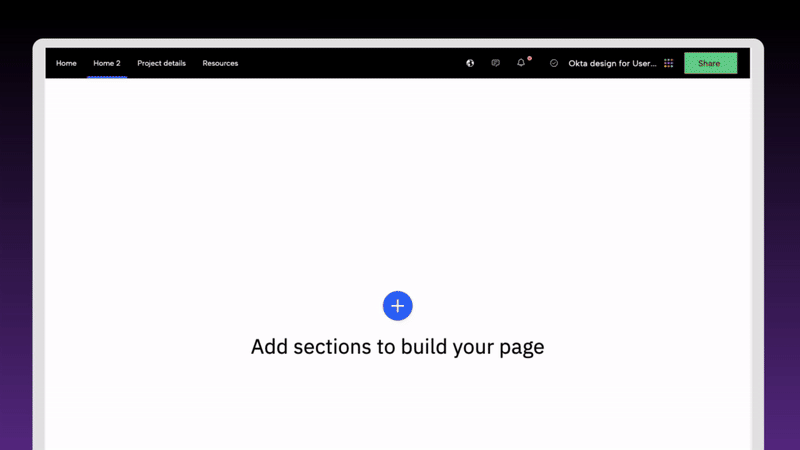
2. AI-Driven Efficiency
Rocketlane’s AI capabilities transform project delivery by automating repetitive tasks and executing core workflows, allowing teams to focus on high-value work:
- Intelligent Automated Workflows: The sales to delivery handoff is streamlined with intelligent scoping and customizable, dynamic templates, ensuring every requirement is captured and carried forward. Rocketlane also automatically shifts deadlines, updates dependencies, and flags risks when timelines change, keeping projects on track without constant oversight.
- End-to-end Project Management: Project execution becomes more agile and responsive with built-in collaboration spaces that allow teams to tailor their methodology—Agile, Waterfall, or hybrid—to meet each client’s unique needs. This adaptability is reinforced by strong project governance tools that keep stakeholders aligned through automated updates and proactive alerts, helping identify and address potential risks before they impact delivery.
- AI-powered Resource Management: As projects enter execution, AI-driven resource management steps in, matching the right talent to the right work based on real-time availability and skills.
AI is embedded into each layer of Rocketlane’s delivery engine to streamline operations, eliminate repetitive tasks, and empower teams to achieve more with less effort. Plus, Rocketlane’s intuitive, user-friendly interface empowers services teams to adopt the platform rapidly and stay productive from day one, regardless of size or technical expertise.
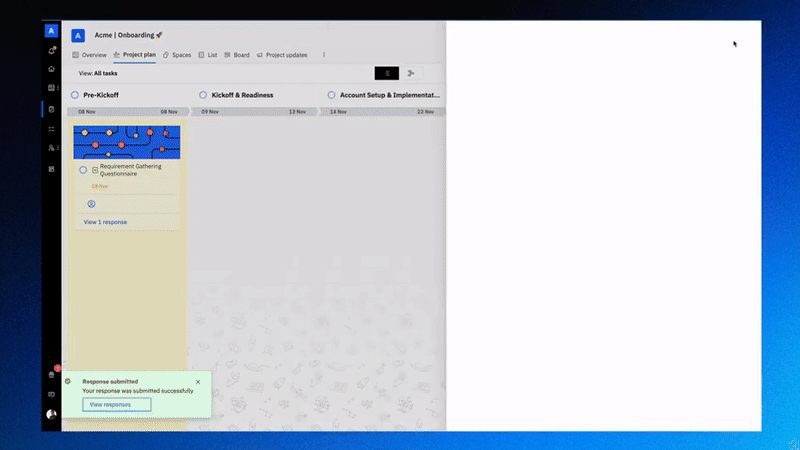
3. Precision in Resourcing and Staffing
Rocketlane’s AI optimizes resource management, a critical need for services delivery teams:
- Smart Allocation: Resource AI instantly assembles the ideal project team by analyzing each individual’s skills, availability, workload, and even historical performance. With a single click, it matches people to project roles for the best business outcomes. This optimizes team assignments, prevents overutilization or burnout, and ensures every project has the right talent in place.
Experience firsthand how Resource AI assembles your perfect project team, recommends the best allocations, and models real-time margin and utilization impacts.
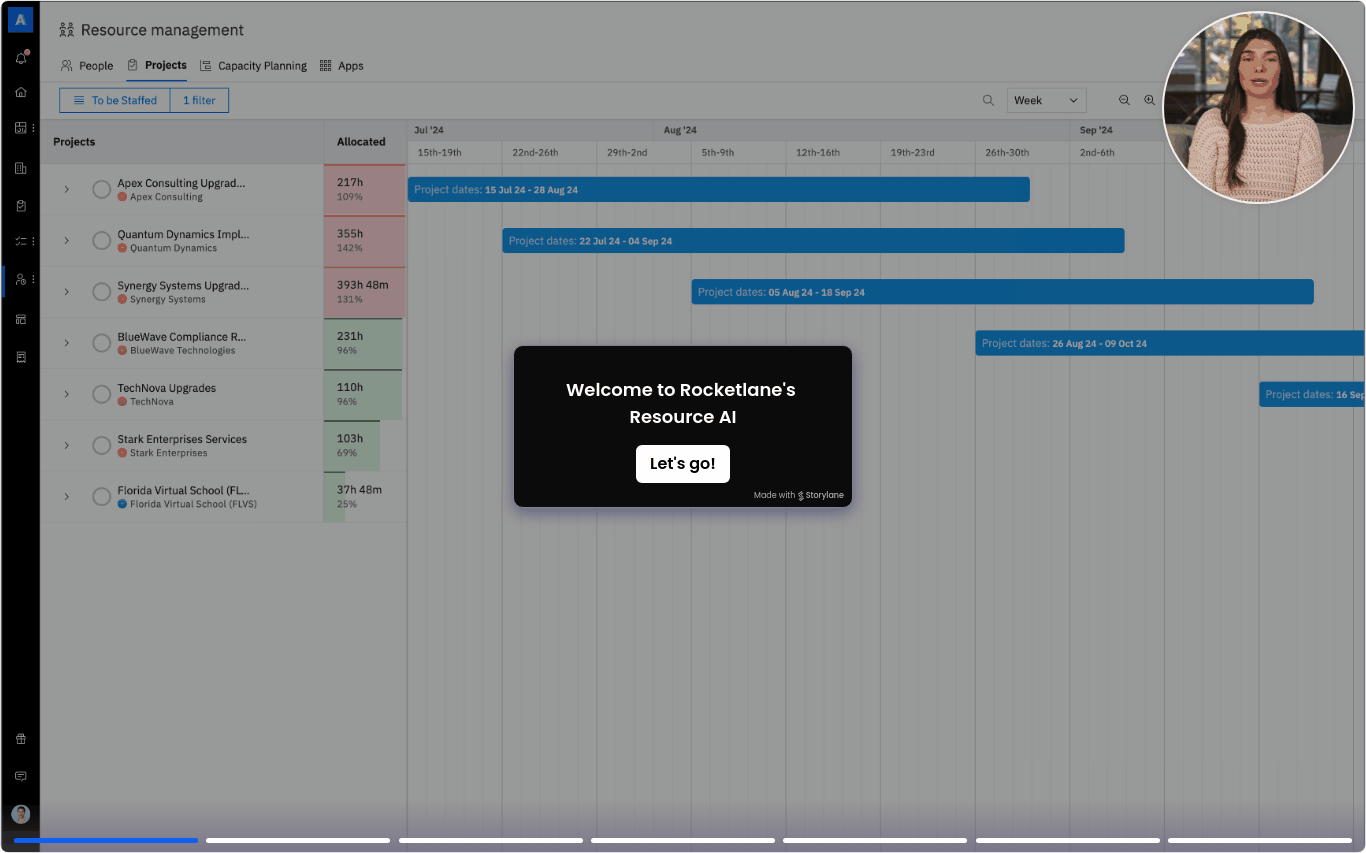
- Proactive Planning: It forecasts staffing needs, identifies roll-offs, and suggests hires based on project pipelines, shifting resourcing from reactive to strategic.
- Utilization Guardrails: Rocketlane flags idle allocations or overuse, ensuring optimal team performance and cost efficiency.
These features help delivery teams maintain balance and deliver projects on time without last-minute staffing scrambles.
4. Financial Governance and Profitability
Rocketlane ensures services delivery teams stay on budget, maximize profitability, and gain full visibility into project and portfolio performance:
- Real-Time Tracking: Monitor project costs, billing milestones, and expenses as they occur, while proactively flagging deviations or delays.
- Automated Policies: Time-tracking rules, expense thresholds, and billing schedules are enforced automatically, minimizing manual oversight and ensuring consistency.
- Effortless Time Tracking: Integrated with team calendars, time tracking becomes a breeze for teams, capturing accurate data without disrupting workflows.
- Streamlined Financial Management: Automate revenue recognition, expense reporting, and invoice generation to reduce administrative burden and accelerate cash flow.
- Profitability & Portfolio Insights: Rocketlane surfaces opportunities to optimize budgets, improve margins, and prevent revenue leaks, while intuitive analytics provide portfolio-level visibility into progress, performance, and financial health.
This level of financial clarity and control enables delivery teams to deliver consistent value while protecting the bottom line, a critical advantage for any organization.
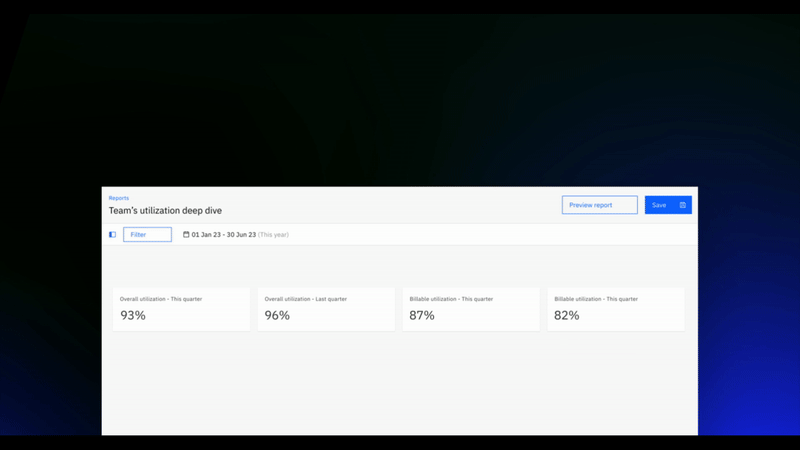
5. Scalability and Integration
Rocketlane adapts to the needs of growing teams and complex workflows:
- Seamless Integrations: Pre-built connectors with tools like Salesforce, Jira, and Slack, plus flexible APIs, ensure Rocketlane fits seamlessly into any tech stack.
- Global Capabilities: Multi-currency and multi-language support make it ideal for teams operating across regions.
- Standardized Processes: Dynamic templates and playbooks enforce consistency, ensuring quality as teams scale.
This adaptability makes Rocketlane a long-term solution for services delivery teams at any stage of growth.
The future of professional services teams
As professional services evolve toward an AI-driven, client-centric future, where predictive analytics, seamless collaboration, and agile workflows define success, legacy platforms like Kantata OX and OpenAir increasingly fall short, burdened by rigid structures and manual processes that hinder innovation and scalability.
In contrast, choosing a modern PSA like Rocketlane delivers:
- Transformative business impact with organizations typically experiencing 20-40% faster project delivery timelines
- Optimized resource utilization rates through intelligent AI allocation
- Elevated client satisfaction scores via real-time portals and automated updates
- Boosted team productivity from streamlined automations
- Enhanced financial visibility for proactive margin management
- Overall operational efficiency that reduces silos and accelerates growth
By embracing Rocketlane's forward-thinking design, professional services teams can not only navigate today's challenges but thrive in tomorrow's dynamic landscape, turning potential pitfalls into competitive advantages.
Try the next-gen PSA today!

